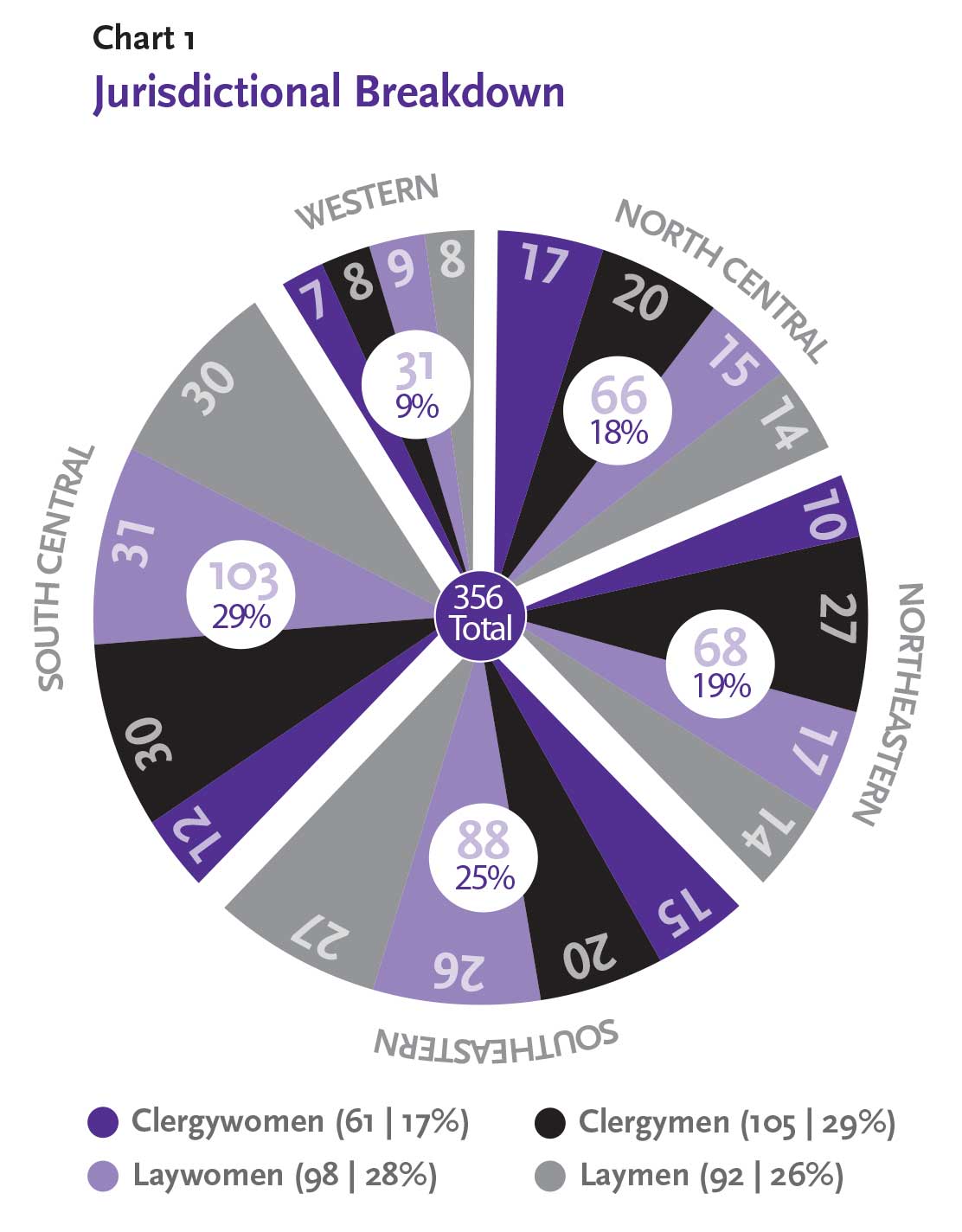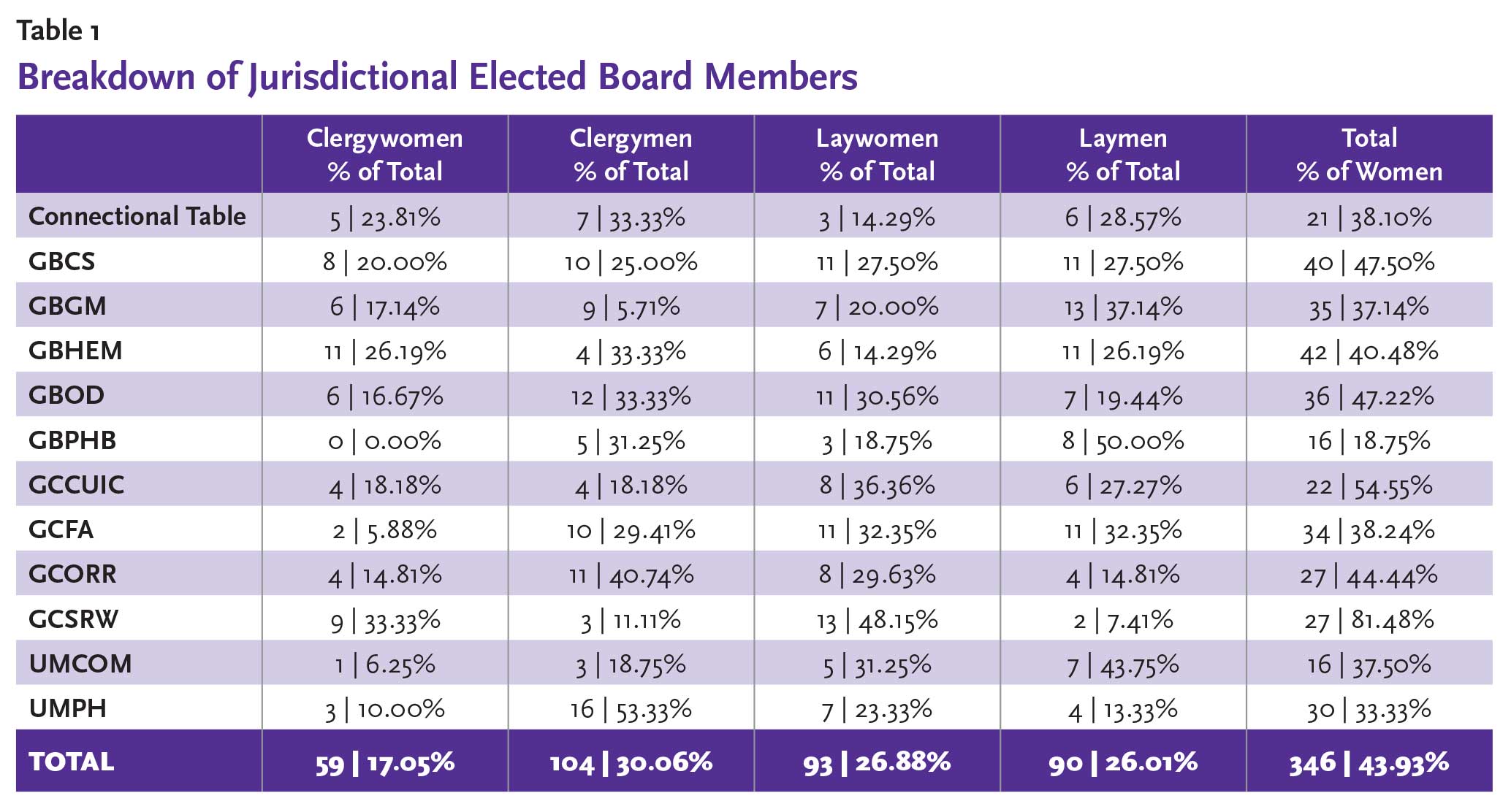By Lindsey Graham and Craig This
Women, lay and clergy, comprise 44% of the total membership of the general boards and agencies from the United States jurisdictions. Clergywomen represent 37% of the total elected clergy and laywomen represent 52% of the total elected laity (see Chart 1). These numbers compare quite interestingly to the overall United Methodist members.
Laywomen are nearly 60 percent of overall church membership in the United States; clergywomen represent 23% of active U.S. United Methodist clergy.

Women gain, lose representation
Clergywomen have less representation than clergymen in all agencies, except the General Commission on the Status and Role of Women (GCSRW) (see Table 1). In some agencies, the malefemale representation is almost even. In others, such as General Board of Discipleship (GBOD), there are two clergymen for every clergywoman as a voting member. And the governing boards of the General Council on Finance and Administration (GCFA) and United Methodist Publishing House (UMPH), have five clergymen for each clergywoman. No clergywomen serve on the General Board of Pensions and Health Benefits.
Laywomen fair better. GCFA and General Board of Church and Society (GBCS) have an equal number of laywomen and laymen on their governing boards. Laywomen have a numerical advantage to laymen at the GBOD, the Publishing House, the General Commission on Christian Unity and Interreligious Concerns (GCCUIC), General Commission on Religion and Race (GCORR) and GCSRW.
The question is do these numerical advantages translate into leadership positions at the general agency level?

Are the jurisdictional pools the problem?
The representation of laywomen and clergywomen appears to be worse at the jurisdictional level (see Chart 1). Overall, clergywomen make up 17% of the total membership of the general agencies. In no jurisdiction do the clergywomen outnumber the clergymen, but in both the North Central Jurisdiction (25%) and Western Jurisdiction (22%) their overall percentage of the general agency membership exceeds 20%. For the Northeastern and Southeastern, clergymen outnumber clergywomen 2.5 to 1.
Laywomen make up 28% of the total membership of the general agencies and, as such, tend to have better representation than laymen in most jurisdictions. Except for the South Central Jurisdiction, laywomen outnumber laymen. However, the laywomen’s numerical advantage is nothing like that of the clergymen’s numerical advantage of clergywomen. Laywomen outnumber laymen in most jurisdictions by a total of two persons and not two times as many.
So, are the jurisdictions the problem? The general agencies can only disperse the membership from the people the jurisdictions elect to serve. If the jurisdictions elected more laywomen and clergywomen, there would be more women to serve the general agencies. Do these elections reflect a lack of qualified women to serve at the general agency level or do they elections institutional sexism that fails to nurture, identify and deploy women as agency board members? All that is available here are numbers, not reasons.
Conclusion
Paragraph 705 of the 2008 Book of Discipline recommends that the jurisdictional membership on each program board incorporate one-third clergy, one-third laymen and one-third laywomen. The general agency membership numbers show that this is not the case.
Clergy make up 47% of the total general agency membership and neither laywomen (28%) nor laymen (26%) approach one-third representation. The problem lies with the jurisdictions and their inability to provide a greater diversity of representation of individuals to serve at the general agency level. It is time to challenge all U.S. jurisdictions to claim our denominational call to be a more diverse and inclusive church at all levels.
Lindsey Graham is website coordinator for GCSRW.
Craig This is data analyst in the Department of Institutional Research at Wright State University in Ohio.
